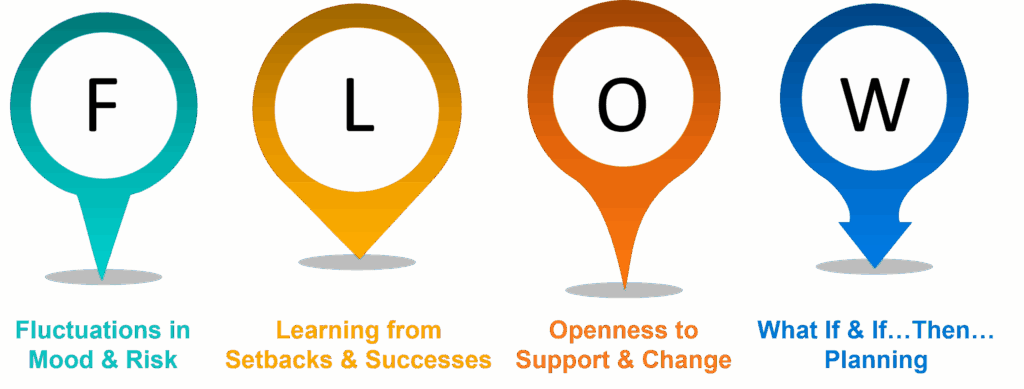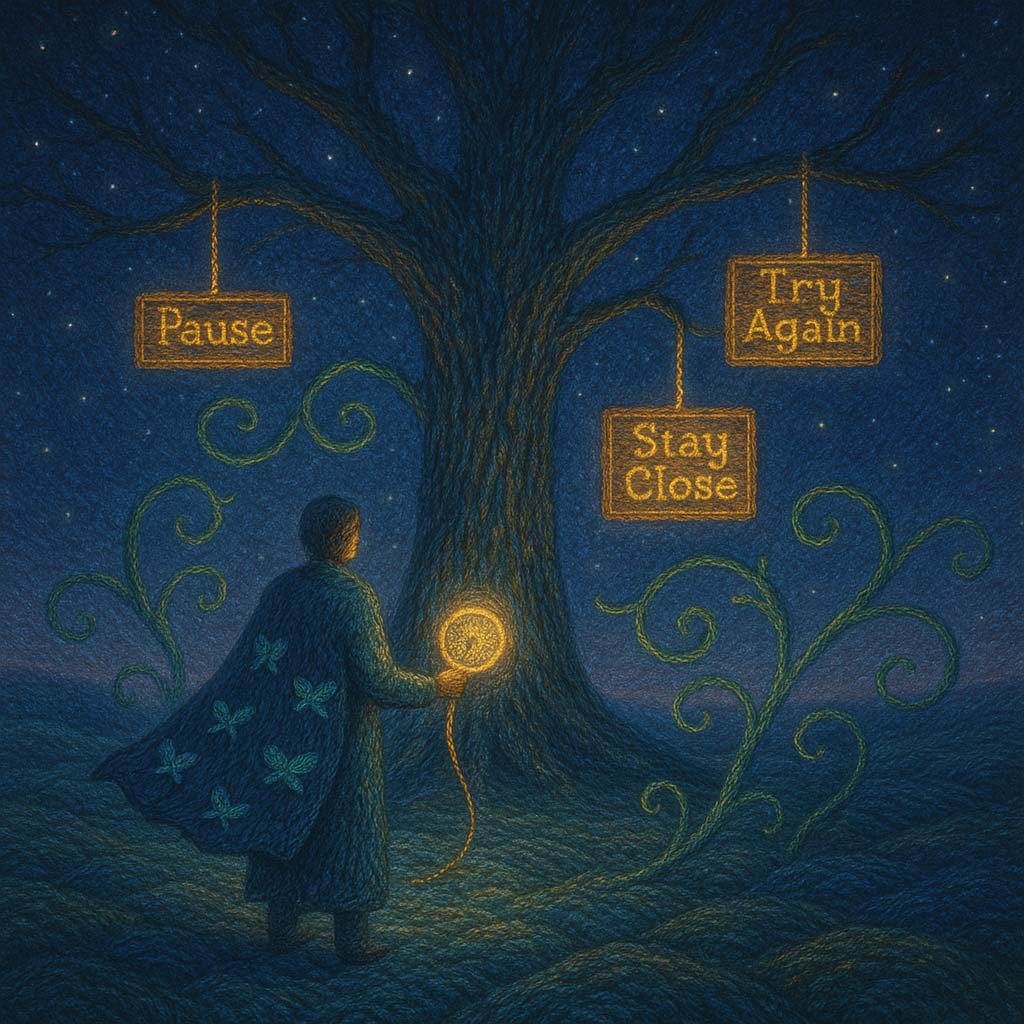

Life in Motion: FLOW
FLOW on the Loom – Weaving the Ups and Downs
After the crisis, life does not freeze. It moves—sometimes smoothly, sometimes unevenly. The FLOW phase captures this motion. It is the stage where people live between recovery and risk, between old ruptures and new resilience. This is not about assessing imminent danger or analysing the attempt. It is about staying attuned to emotional rhythms over time. In FLOW, clinicians help individuals observe fluctuations in mood and risk, learn from past setbacks and strengths, open to timely support, and prepare for disruptions before they escalate. The loom never stops. The cloth is still being woven.
FLOW is a framework for ongoing emotional maintenance and adaptive planning. It stands for:
F – Fluctuations in Mood & Risk
L – Learning from Setbacks & Successes
O – Openness to Support & Change
W – What If & If…Then Planning
FLOW applies weeks, even months, after a suicide attempt—or at any point where risk remains present but no longer acute. It helps clinicians co-create care that is dynamic, responsive, and deeply personalised.
F – Fluctuations in Mood & Risk

Suicidal risk is not binary. It moves in waves—sometimes tight, sometimes loose. In this first strand, we help the person tune into the weave of their inner world. “When you think about the past week, were there any days that felt especially hard—or unexpectedly easier?” “What tends to trigger a harder day for you?” “Have your thoughts of suicide been happening more often, less often, or about the same as before?” “Can you describe a moment recently when you felt more in control or at peace?” These questions are less about rating risk and more about noticing patterns. The goal is to catch changes before they collapse. We are not just monitoring safety—we are teaching the person to read the fabric of their own emotional life.
L – Learning from Setbacks & Successes

Not every difficult day becomes a crisis. And not every step forward means stability. Here, we reflect: “Can you walk me through a recent tough moment—and how you managed to stay safe or grounded?” “What’s something small you did this week that helped, even a little—something worth remembering for next time?” “Have there been small things, even tiny actions, that made you feel a little better?” “Do you feel like you have more coping strategies now than you did a few months ago?” This is the thread of insight. It reminds the person they have weathered storms before—and offers a living blueprint for how they might do so again. Every struggle leaves a trace of strength. Our job is to help them see it.
O – Openness to Support & Change

Help-seeking is a skill—and for many, it is a tender one. This strand explores relational safety: “When you start to feel overwhelmed, what signs tell you it might be time to reach out?” “What would make it easier to ask for support, especially before things get too heavy?” “Do you feel like your current level of support is enough right now?” “Would a shared signal or phrase help you communicate that you’re struggling without having to explain everything?” Asking for help should not feel like failing. It should feel like adapting. FLOW helps people name their support ecosystem and recognise when adjustments are needed—whether that means stepping up care or gently stepping back.
W – What If & If…Then Planning

Disruption is inevitable. What matters is having a plan when the thread begins to fray. In this final strand, we explore anticipation: “If things started to spiral again, what warning signs might you notice—inside or around you?” “If you’re feeling alone during a bad moment, then who would you want to reach out to, and how?” “If suicidal thoughts spiked again, then do you have a plan in place about means—how to reduce access, who to tell?” “If you hit another major setback, then do you feel you have the tools to prevent a downward spiral?” These plans are not hypothetical. They are lifelines made visible—preloaded responses for high-risk moments when clarity fades. In FLOW, scenario planning builds safety not through rigid rules, but through rehearsed resilience.
Meet Jordan – Our Roleplay Character
Jordan is a 42-year-old software engineer, six months post-attempt. Life feels like it’s in motion again—some days hopeful, others hollow. Deadlines loom, sleep is disrupted, and vulnerability has returned in waves. Jordan wants to understand these shifts—to stay steady when the thread starts to tighten. As their clinician, your task is to use FLOW to explore Jordan’s inner rhythm: the rises, the falls, the moments of strength, and the patterns that could be softened before they strain.
What You’ll Take Away from FLOW Training
- A four-strand framework for tracking risk and resilience across time
- Practical strategies to support self-monitoring and emotional awareness
- Tools to identify early warning signs and adjust care responsively
- Scenario planning techniques to create personalised “If…Then” safety plans
- Confidence in pacing follow-up conversations in ways that support autonomy
- A deeper ability to name and reinforce the protective threads already present
- A stance of presence that honours emotional movement, not just milestones
Join STEPS training to learn how to weave with—not against—the rhythm of life.
Because safety is not the absence of risk. It is the presence of awareness, care, and a thread strong enough to hold through motion.

